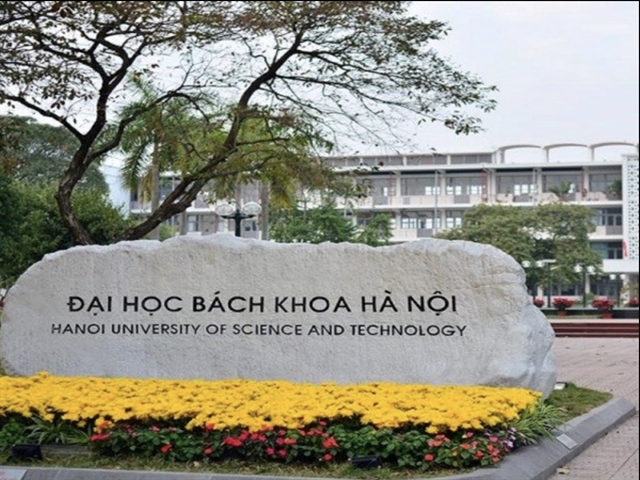 Society
Society

 |
| Hà Nội University of Science and Technology is planned to be merged with some other universities in Hà Nội under the Politburo issued Resolution 71. — VNA/VNS Photo |
HÀ NỘI — Merging and restructuring universities is seen as a crucial policy and an urgent step for Việt Nam’s higher education to achieve a breakthrough, meet global standards and overcome the current fragmented, small-scale system, experts say, ahead of the major restructuring set to take place.
Recently, the Politburo issued Resolution 71 on breakthroughs in the development of education and training, calling for the restructuring and reorganisation of higher education institutions; merging or dissolving substandard institutions; studying the merger of research institutes with universities; and considering the transfer of some universities to local management to improve efficiency and better meet local human resource training needs.
Accordingly, Minister of Education and Training Nguyễn Kim Sơn said the ministry has prepared a plan to submit to the Government for approval, calling this the “great restructuring of higher education institutions.”
“The restructuring will be implemented in a directive and mandatory manner, with consultation only for reference,” Sơn said.
“If we ask for opinions, it certainly cannot be done.”
Meanwhile, Associate Professor Dr Nguyễn Thanh Chương, chairman of the University Council of the University of Transport and Communications, said this is a completely correct policy in line with current practical requirements.
“The merger will create development opportunities, lift universities to a higher level and possibly reach international standards,” Chương said.
Sharing this view, Phạm Thái Sơn, director of the Admissions and Communications Centre of the HCM City University of Industry and Trade, agreed with dissolving weak institutions and merging them to form stronger universities.
Professor Nguyễn Đình Đức of the University of Engineering and Technology said the merger stems from the need to concentrate resources so that Việt Nam’s higher education can achieve breakthrough development in the new era, with great expectations placed on science, technology and education.
Mergers will help avoid dispersion and duplication of programmes, especially in small-scale, inefficient institutions.
They will create multidisciplinary universities of sufficient size, with ecosystems for research and innovation, increasing opportunities to enter global rankings and attract international scholars and students.
Each university will have a clear 'mission' tied to localities or key sectors.
Mergers will also promote autonomy and accountability.
Fewer administrative units will help synchronise strategy, finance and human resources, with transparent Key Performance Indicators (KPIs).
Today, mergers will facilitate interdisciplinary digital transformation by combining digital capacities, data, laboratories and libraries to tackle cross-disciplinary challenges (AI–materials science–biomedicine–environment, etc.).
“I believe this is the right moment, an unprecedented opportunity for us to boldly reform Việt Nam’s higher education system, to best meet the demand for high-quality human resources and focus on science and technology development,” Đức said.
No one is left behind
Professor Chương noted that mergers and restructuring will inevitably raise concerns among staff, lecturers and students.
“This is inevitable, but teachers will adapt after a period of time,” he said.
Professor Đức also acknowledged such concerns as natural and legitimate, including worries about changes in structure, job positions, routines, income, reassignment of duties, new evaluation standards and the degree of cultural and traditional integration after mergers.
According to the professor, addressing these concerns requires clear principles of 'no one is left behind,' transparency and phased implementation.
After mergers, job positions must be defined quickly.
For lecturers, seniority and achievements must be respected while accepting diversity. For students, study rights must be safeguarded.
Emphasising that mergers are not mechanical combinations but strategic restructuring to form strong, interdisciplinary, autonomous universities with high accountability, Đức said the success of this 'reform' depends on institutional design, governance models, transparent data, humane roadmaps and commitment to placing quality, people and the national mission at the centre.
Earlier, at the 2025 Higher Education Conference, Minister Sơn devoted much of his concluding remarks to mergers, also working on ideological guidance for universities.
Reaffirming that restructuring and mergers are not merely about reducing numbers but about creating development momentum, the minister urged public universities to be 'ready for every possibility, cheerful in every situation and wholeheartedly devoted to public duty and shared responsibility.'
According to Ministry of Education and Training statistics, Việt Nam currently has 11 universities; 240 universities and academies (excluding national and regional universities), including 173 public, 62 private and 5 foreign universities; 8 training institutions with higher education activities; 40 research institutes authorised to train doctoral candidates; and 5 other institutions authorised to train at master’s and doctoral level.
There are also 40 institutions in the defence and security sector. — VNS




